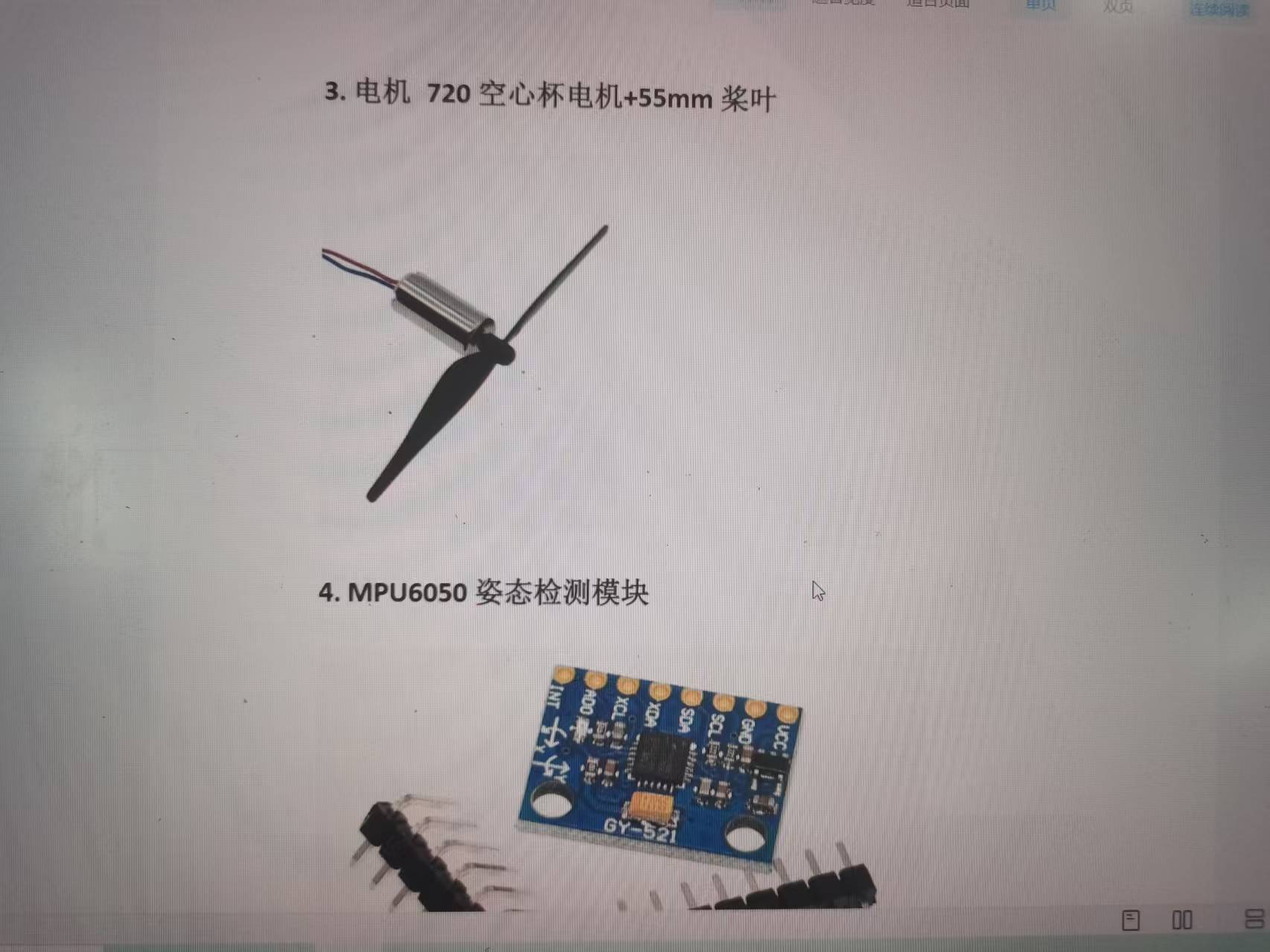主函数:
#include <WiFi.h> //wifi功能需要的库
#include <MPU6050_tockn.h> //mpu6050陀螺仪库
#include "Motor.hpp"
const char *remoteIP = "192.168.4.2";
uint16_t remotePort = 2222;
WiFiUDP Udp; // 声明UDP对象.服务端开启,监听并记录来自客户端的ip,端口
MPU6050 mpu6050(Wire);
Motor motor(7, 10, 0, 1); // 前后平衡控制 空心杯马达引脚
bool sw = false; // 手势感应,倾倒检测
const int ledpin1 = 13, ledpin2 = 12;
int motor_pwm; // 前后平衡控制 马达的PWM
float kp = 16, ki = 0.03, kd = 19.00;
float balanceAngle = 1.55, keepAngle;
float ax, gx, integrate, bias, gy; // 角度,角速度,积分,误差
void detect_sw()
{
static bool sw1, sw2;
if (gy > 450)
{
sw1 = true;
}
if (gy < -450)
{
sw1 = false;
}
if ((ax > -45) && (ax < 45))
{
sw2 = true;
}
else
{
sw2 = false;
}
sw = (sw1 && sw2) ? true : false;
}
void pwm_calculation()
{
bias = ax - keepAngle;
integrate += bias;
integrate = constrain(integrate, -200, 200);
motor_pwm = kp * bias + ki * integrate + kd * gx;
}
void motor_ctrl()
{
if (!sw)
{
motor_pwm = 0;
}
motor.run(motor_pwm);
}
void udp_print_val()
{
Udp.beginPacket(remoteIP, remotePort); // 准备发送数据到目标IP和目标端口
String angle_gyro = String(ax) + '\t' + String(gx) + '\t';
Udp.println(angle_gyro); // 将接收到的数据放入发送的缓冲区
Udp.endPacket(); // 向目标IP目标端口发送数据
delay(50);
}
void udp_debug()
{
if (Udp.parsePacket()) // parsePacket()返回解析到的数据长度,不为0则有数据
{
char val = Udp.read(); // 读取1字节数据;
Serial.println(val);
if (val == '0')
{
kp -= 1;
}
if (val == '1')
{
kp += 1;
}
if (val == '2')
{
ki -= 0.01;
}
if (val == '3')
{
ki += 0.01;
}
if (val == '4')
{
kd -= 0.1;
}
if (val == '5')
{
kd += 0.1;
}
if (val == 'u')
{
keepAngle += 0.1;
}
if (val == 'd')
{
keepAngle -= 0.1;
}
if (val == 'c')
{
keepAngle = 15;
}
Udp.beginPacket(remoteIP, remotePort); // 准备发送数据到目标IP和目标端口
String pid_val = String(kp) + '\t' + String(ki) + '\t' + String(kd) + '\t' + String(keepAngle);
Udp.println(pid_val); // 将接收到的数据放入发送的缓冲区
Udp.endPacket(); // 向目标IP目标端口发送数据
}
}
void led_effect()
{
int ledPWM = abs(motor_pwm);
if (motor_pwm < 0)
{
analogWrite(ledpin1, ledPWM);
}
else
{
analogWrite(ledpin2, ledPWM);
}
}
void setup()
{
Serial.begin(115200); // 初始化波特率
WiFi.softAP("ESP32_Udp_server", ""); // 打开ESP32热点,ESP32默认IP是192.168.4.1
Udp.begin(1111); // 启动UDP监听这个端口
Wire.begin(4, 5);
mpu6050.begin();
mpu6050.calcGyroOffsets(true);
keepAngle = balanceAngle;
motor.flameout(); // 防止因部分引脚开机启动默认为高电平,导致马达转动
analogWrite(ledpin1, 125);
analogWrite(ledpin2, 125);
delay(500);
}
void loop()
{
mpu6050.update();
ax = mpu6050.getAngleX();
gx = mpu6050.getGyroX();
gy = mpu6050.getGyroY();
pwm_calculation();
detect_sw();
motor_ctrl();
led_effect();
udp_debug();
// udp_print_val();
}
motor(马达)代码:
#pragma once
#include <Arduino.h>
#define LEDC_FREQ 500 // LEDC频率
#define LEDC_BIT 8 // LEDC分辨率(精度) 0-255
class Motor
{
private:
int motorPIN1, motorPIN2; // ADC、马达控制引脚
int channel1, channel2; // esp32的ledc通道
public:
Motor(int, int, int, int);
void run(int);
void brake(); // 马达静止(高阻)
void flameout(); // 马达熄火(无阻力)
};
Motor::Motor(int mpin1, int mpin2, int ch1 = 0, int ch2 = 1)
{
motorPIN1 = mpin1;
motorPIN2 = mpin2;
channel1 = ch1;
channel2 = ch2;
ledcSetup(channel1, LEDC_FREQ, LEDC_BIT);
ledcSetup(channel2, LEDC_FREQ, LEDC_BIT);
ledcAttachPin(motorPIN1, channel1);
ledcAttachPin(motorPIN2, channel2);
}
// 马达运动PWM控制
void Motor::run(int pwm)
{
pwm = constrain(pwm, -255, 255);
if (pwm >= 0)
{
ledcWrite(channel1, pwm);
ledcWrite(channel2, 0);
}
else
{
ledcWrite(channel1, 0);
ledcWrite(channel2, -pwm);
}
}
// 马达静止(高阻)
void Motor::brake()
{
ledcWrite(channel1, 255);
ledcWrite(channel2, 255);
}
// 马达熄火(无阻力)
void Motor::flameout()
{
ledcWrite(channel1, 0);
ledcWrite(channel2, 0);
}
清单:


























 495
495

 被折叠的 条评论
为什么被折叠?
被折叠的 条评论
为什么被折叠?








